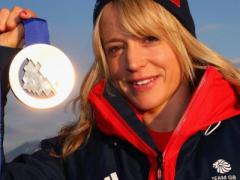Snowboarding was developed in the United States in the 1960’s as people across the country began to seek out new wintertime activities. Many people point to Sherman Poppen as the innovator of the snowboard in 1965.
Poppen, interested in building something for his daughter, braced a pair of skis together and tied a rope to the front to help steer. The “snurfer,” as it was later called, debuted a year later as the world’s first production snowboard.
Over the next decade, different pioneers grew the production of boards and the overall interest in snowboarding. Surfers and skateboarders joined the cause, and by 1980, snowboarding was a nationwide activity. Competition was the next logical step.
Competition and national and international federation influence began in the 1980’s. The United States held its first national championships in 1982 and hosted the first World Championships in 1983. In 1987, a four-stop World Cup tour was established, with two stops in the United States and two in Europe.
The International Snowboarding Federation (ISF) was formed in 1990 to govern international competition and the International Ski Federation (FIS) followed suit in 1994, making snowboarding an officially sanctioned discipline eligible for the Olympics. The FIS pushed for snowboarding’s inclusion in the 1998 Games and remains the international federation for the sport.
As a result of the emergence and growth in popularity of the Slopestyle event and success of Halfpipe and Snowboard Cross at Turin and Vancouver, the IOC have added Slopestyle to the program for the 2014 Winter Olympics in Sochi.
Olympic History
Snowboard was added to the Olympic program for the first time at Nagano 1998 with giant slalom and halfpipe event for both men and women. At Salt Lake 2002 the alpine event of parallel giant slalom replaced the giant slalom event. Snowboard cross makes its Olympic debut at Torino 2006.
Each nation can send up to 16 athletes in snowboarding, with a maximum of ten males or ten females. A nation may have no more than four athletes competing in any one event. A maximum of 140 athletes has been established for the Olympic competition.












